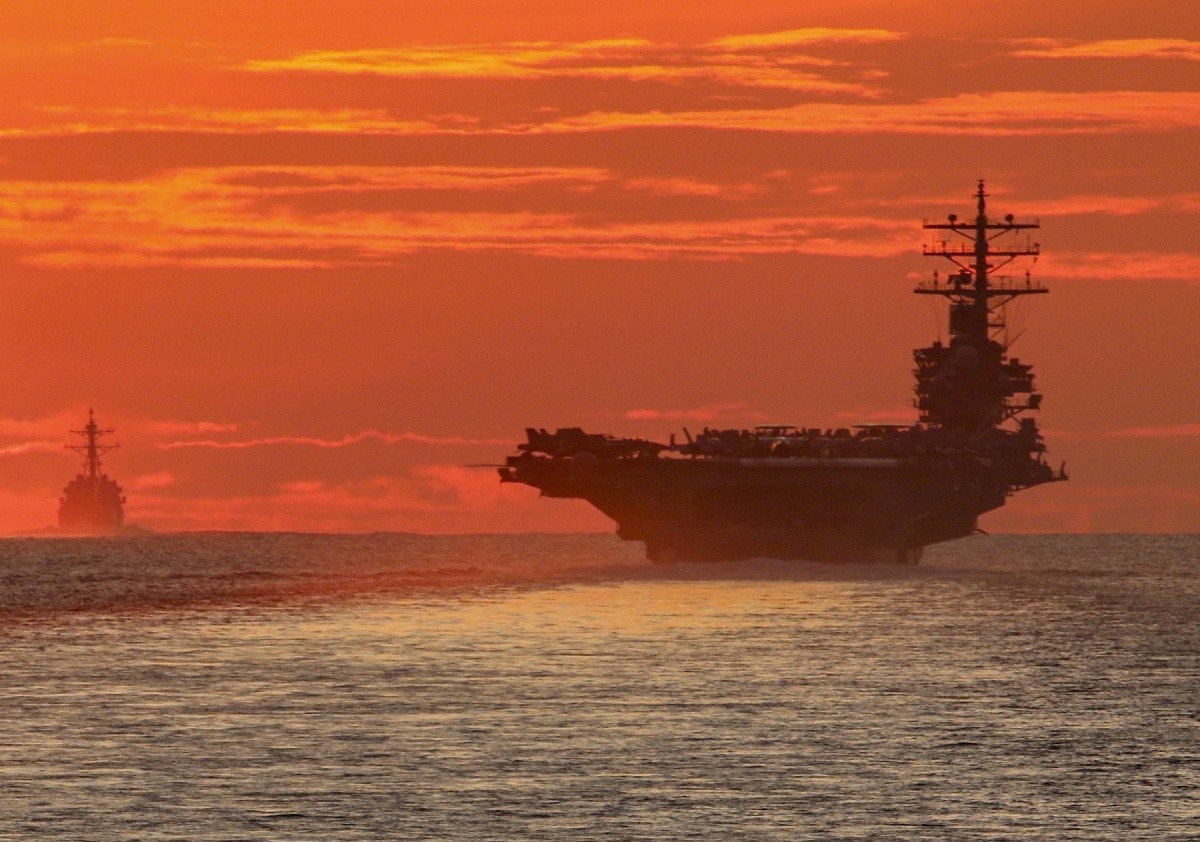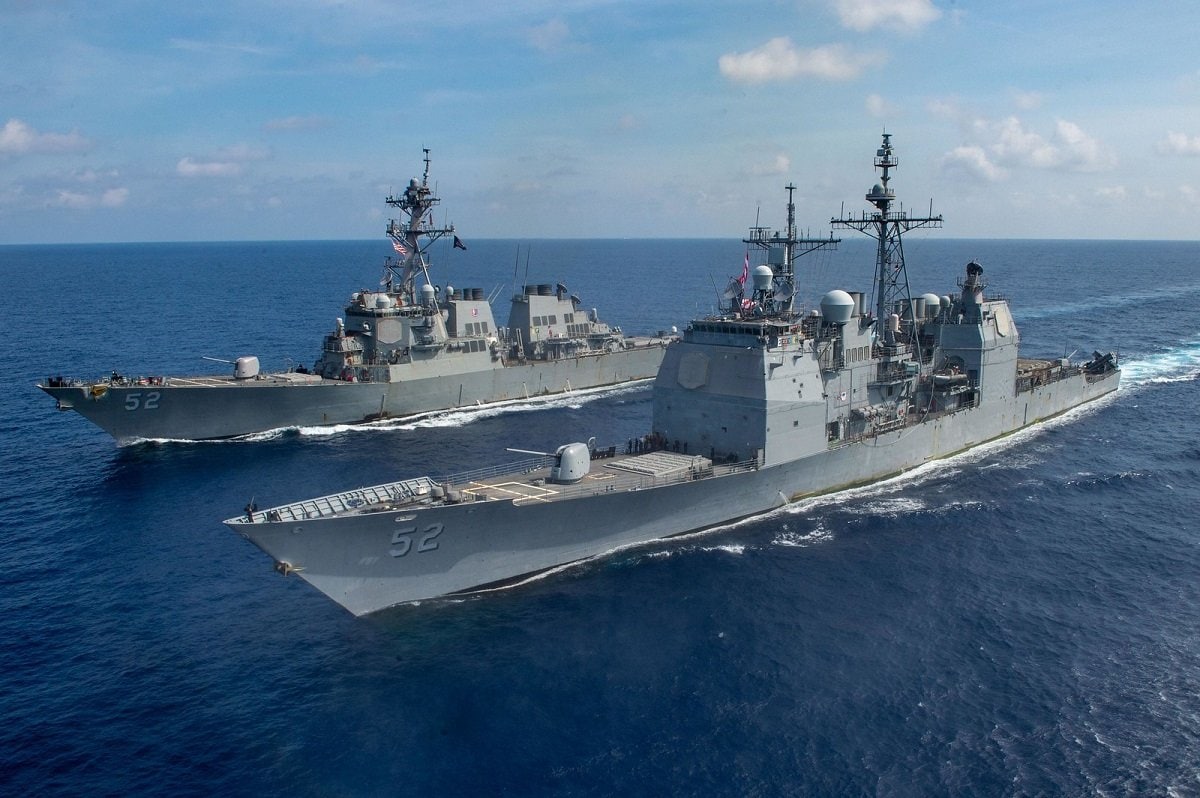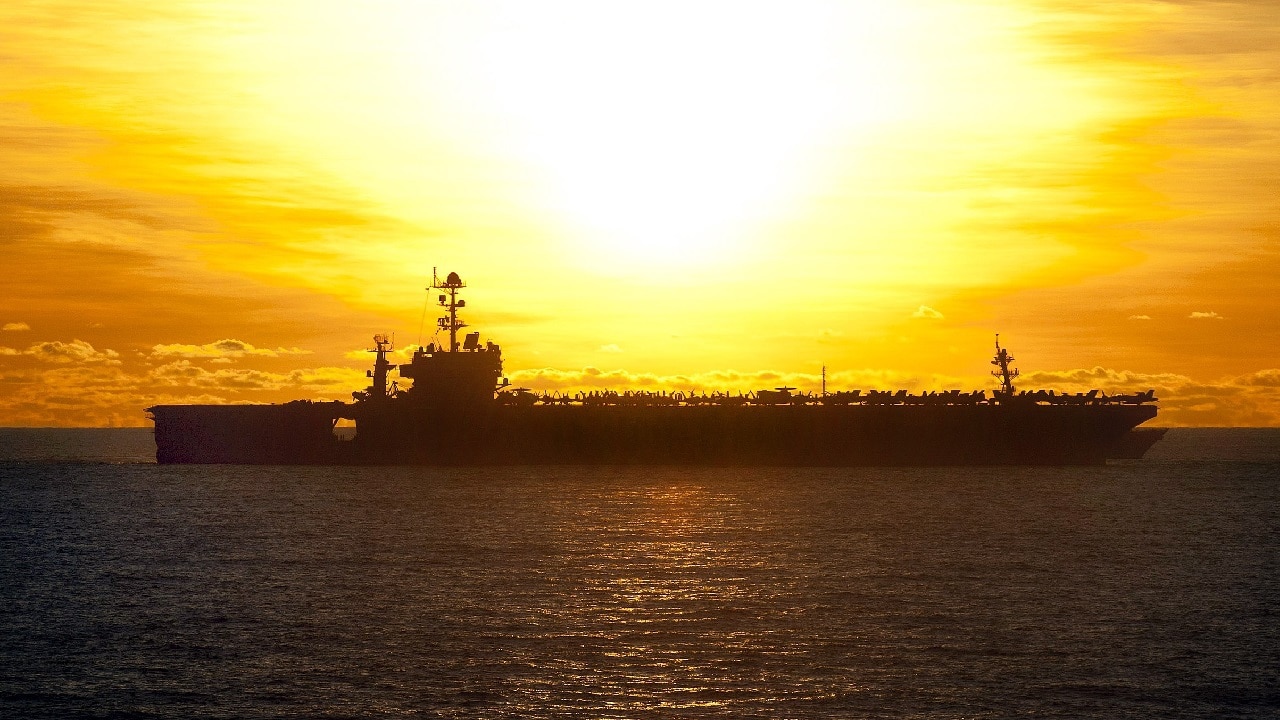The South China Sea is potentially a flashpoint for a regional armed conflict and a global war. The People’s Republic of China, now ramping up military production, looks to extend territorial ambitions into the South China Sea, which threatens Vietnam and the Philippines.
The South China Sea Boils
Vietnam currently has a comprehensive strategic partnership with the United States. Although it does not involve military cooperation, China’s People’s Liberation Army Navy (PLAN) could pose a threat to commercial shipping in the South China Sea.
Simultaneously, the Philippines has a mutual defense pact with the United States, and the PLAN is encroaching on dangerous lines that could bring America and China into direct military confrontation.
China’s Growing Regional Ambitions in the South China Sea
The South China Sea is home to untapped estimates of 11 billion potential barrels of oil and 190 trillion cubic feet of natural gas, making the region a lucrative endeavor for any aspiring country seeking superpower status. The People’s Republic has the most outsized ambitions in the South China Sea, as Beijing wants control over the untapped resources that project the nation into the top global superpower.
Various uninhabited islands are located within the South China Sea, many of which are disputed among the Philippines, Vietnam, Malaysia, Indonesia, and other countries. The PLAN, now the world’s largest Navy, is capable of projecting its will into the region. No other naval force aside from the US Pacific Fleet can deter China.
The PLAN is encroaching upon the Philippines’ Exclusive Economic Zone (EEZ), which threatens Manila’s right to the sea and territorial integrity. According to the United Nations Convention on the Law of the Sea (UNCLOS), Manila has won court rulings in The Hague over its rights to the sea. Nevertheless, international law hasn’t stopped China from its territorial ambitions.
The PLAN has built up numerous manmade islands in the South China Sea and, on multiple occasions, rammed Filipino fishing and naval vessels, which not only threatens the ecosystem but also armed conflict, as the islands could be used for potential military outposts for force projection capabilities. Between the Spratly Islands and Woody Isle, the PLAN has established several dozen outposts, where fighter jets, radar systems, and the capable Dongfeng missiles can be deployed, threatening not just American partners but commercial shipping.
Will America uphold Mutual Defense?
The lack of a deterrence doctrine between the Philippines and the United States is a significant factor contributing to Chinese aggression in the South China Sea. During the past few decades, the US military became intertwined in perpetual wars in Afghanistan and various Middle Eastern and northern African theaters, deviating from its amphibious routes. Simultaneously, China continued to build the People’s Liberation Army Navy (PLAN), the People’s Liberation Army Air Force (PLAAF), and the People’s Liberation Army Rocket Force (PLARF).
Furthermore, confidence in the United States as a reliable ally has decreased in the aftermath of Russia’s invasion of Ukraine in 2022. The “as long as it takes” indecisiveness policy of the Biden Administration and the ambiguity policy of the current Trump cabinet have regional partners worried, especially now, as the US’s strong-arm tactics and diplomatic conflicts with allies have caused alliance rifts.
The United States has attempted to reassure the Philippines that it upholds the mutual defense pact, stating that the alliance between Washington and Manila remains strong. The Philippines’ armed forces are also enhancing their capabilities, recognizing that Manila needs to invest in its defense in the event of any contingency.
Potential Deterrence Methods
China’s encroachment on the South China Sea will necessitate closer cooperation between the Philippines and the United States, enhanced diplomatic relations, and deterrence measures from various countries.
As previously mentioned, various countries have Exclusive Economic Zones in the South China Sea, and the United States needs to push its soft power further to have a broad understanding of the sovereignty of each country’s EEZ under UNCLOS (United Nations Convention on the Law of the Sea). The Philippines, Vietnam, and others can make this point without overly provoking economic or diplomatic retaliation from China by amassing support in the international community for maritime sovereignty and the effects of global trade, should any country come to blows.
Returning to the amphibious roots of the United States Marine Corps, former Commandant General David H. Berger devised Force Design 2030 to counter and contain rapid PLA expansion. By placing littoral regiments along various islets in the South China Sea, the littoral combat teams are designed to hinder the PLAN’s naval movements and provide various logistical elements.

STRAIT OF MALACCA (June 18, 2021) The Navy’s only forward-deployed aircraft carrier USS Ronald Reagan (CVN 76) transits the South China Sea with the Arleigh Burke-class guided missile destroyer USS Halsey (DDG 97) and the Ticonderoga-class guided-missile cruiser USS Shiloh (CG 67). Reagan is part of Task Force 70/Carrier Strike Group 5, conducting underway operations in support of a free and open Indo-Pacific. (U.S. Navy Photo by Mass Communication Specialist 1st Class Rawad Madanat)
Furthermore, China’s rocket force, the People’s Liberation Army Rocket Force (PLARF), could target Marine littoral units in the South China Sea, requiring the United States to focus on further air defense, laser weapons development, and electronic countermeasures. Regional support from America’s assets in Guam, an unsinkable aircraft carrier in the Indo-Pacific, will be critical yet vulnerable in any conflict with China.
Regional Support
The United States and the Philippines won’t be alone, as Japan, which is undergoing a major remilitarization, is also taking China’s threats seriously. Japan’s economy is heavily invested and runs through the Luzon Strait, which the PLAN in the South China Sea will threaten. Japan is reinvigorating its Navy and preparing to purchase over 400 Tomahawk cruise missiles.
Europe is beginning to realize that it should not only take charge of its defense but also create its Indo-Pacific strategy. France currently has a permanent foothold in the Indo-Pacific, with strategic assets in La Réunion, New Caledonia, and French Polynesia, which can supplement those of America and the Philippines if the PLAN’s objectives in the South China Sea threaten French interests in the region.

SOUTH CHINA SEA (April 18, 2020) The Ticonderoga-class guided missile cruiser USS Bunker Hill (CG 52), front, and the Arleigh Burke-class guided-missile destroyer USS Barry (DDG 52) transit the South China Sea. Bunker Hill is deployed to the U.S. 7th Fleet area of operations and is operating with the America Expeditionary Strike Group in support of security and stability in the Indo-Pacific region. (U.S. Navy photo by Mass Communication Specialist 3rd Class Nicholas V. Huynh/Released)200418-N-IW125-2047.
The United Kingdom is also expanding patrols in the Indo-Pacific, which remains a lifeline for its maritime trade economy. Already part of AUKUS alongside Australia and the United States, the British Navy is currently patrolling the region and could help supplement any war in the South China Sea.
Today, the alliance between the United States and the Philippines is crucial in the South China Sea and vital to global maritime trade and international law. If China’s Navy continues encroaching upon sovereign Exclusive Economic Zones, armed conflict has a more heightened chance of occurring here than in the Taiwan Strait, Korean Peninsula, or Kuril Islands. Deterrence, diplomatic enhancement, and heightened American naval production will be needed more than ever.
About the Author: Julian McBride
Julian McBride is a forensic anthropologist and independent journalist born in New York. He is the founder and director of the Reflections of War Initiative (ROW), an anthropological NGO which aims to tell the stories of the victims of war through art therapy. As a former Marine, he uses this technique not only to help heal PTSD but also to share people’s stories through art, which conveys “the message of the brutality of war better than most news organizations.” Julian is also a new 19FortyFive Contributing Editor.

